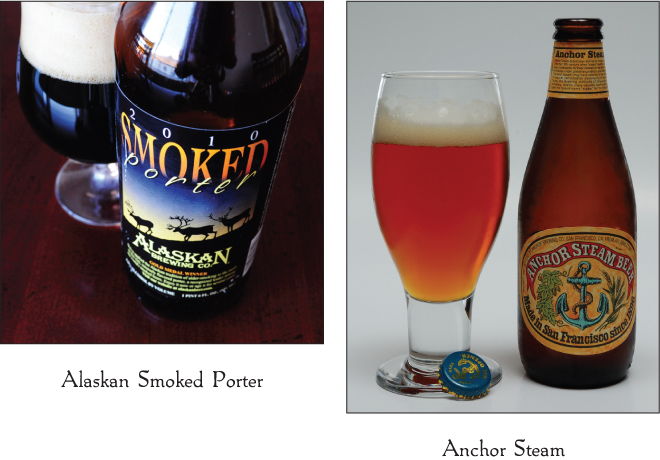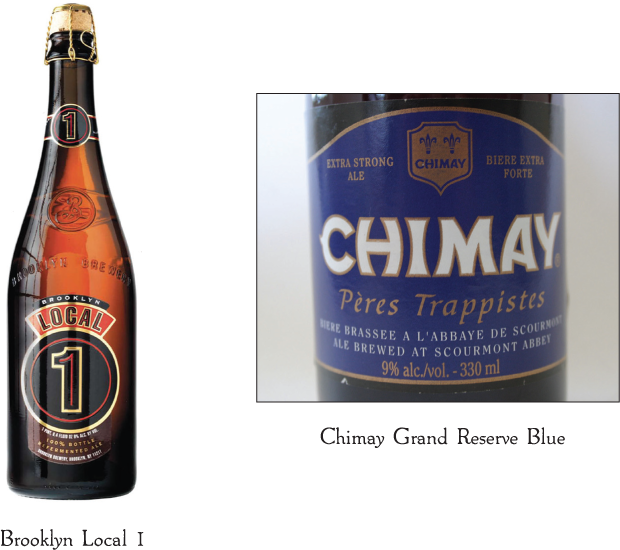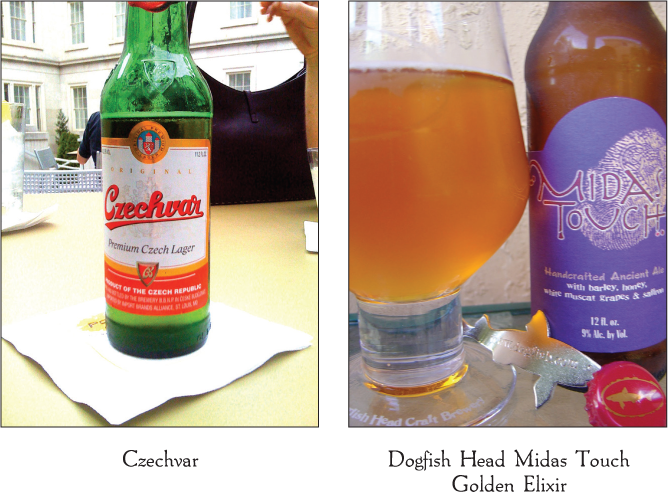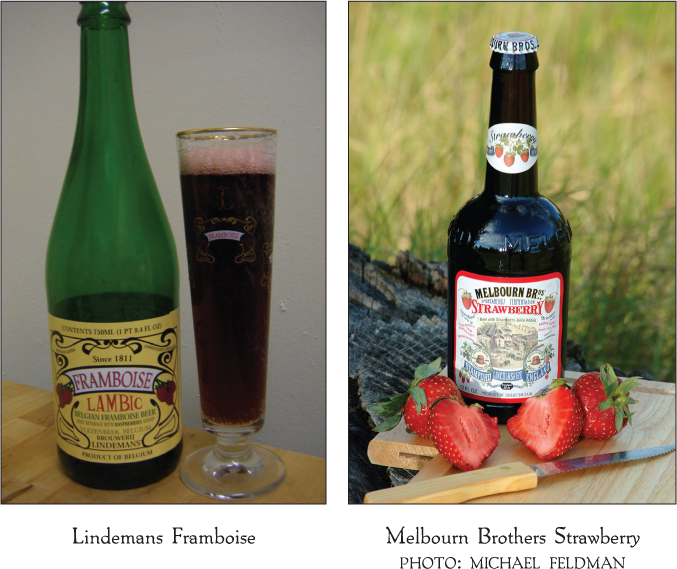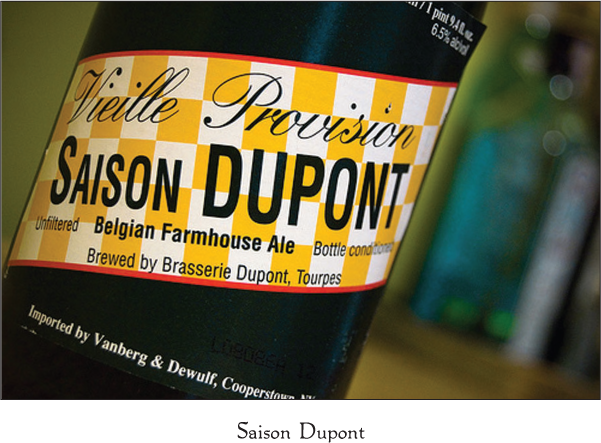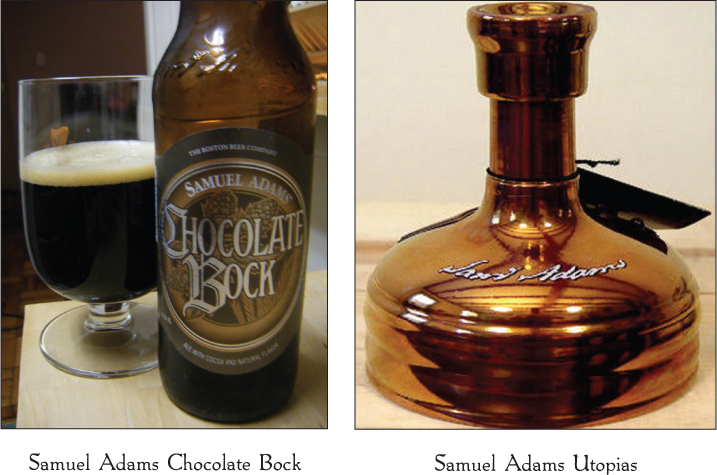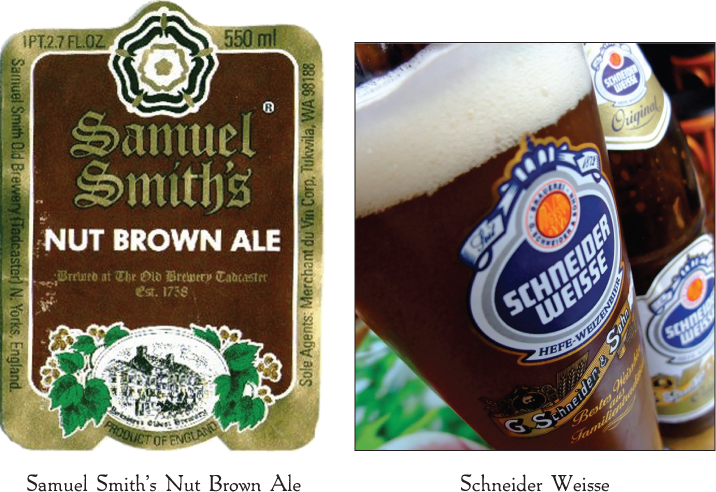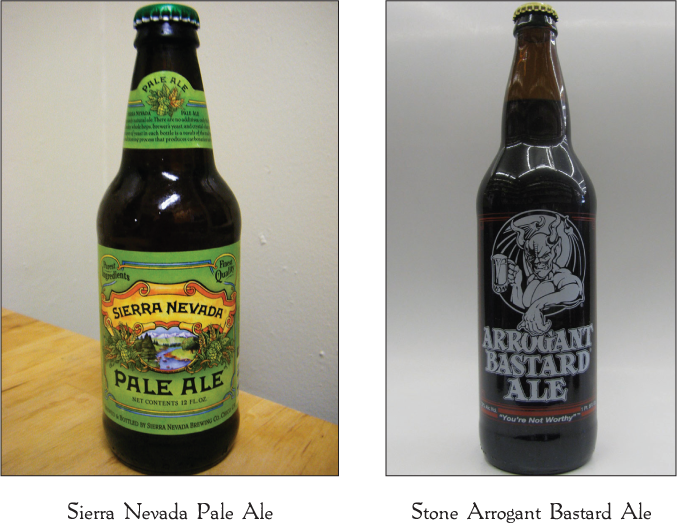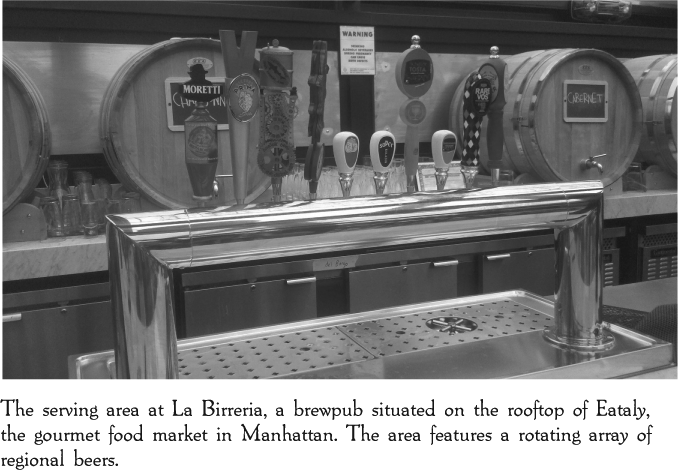
I recall having dinner not too terribly long ago when the conversation among the people at a table next to me turned to beer. There were probably a dozen people there, and the selection of beverages was varied. “Beer is the new wine” was what a gentleman nearby said to the others. Hearing that, I attempted to eavesdrop. “There are so many good beers on the market today, and they match great with food,” he added. I think I sent over a beer to him.
What that diner proudly stated seems to be a thought that is spreading around the country. We’re behind much of the remainder of the world, however, in recognizing the flexibility of beer. Of course, we can’t really be blamed heavily, considering the fact that the revolution in the beer world still is relatively new. Go back to the mid-1970s and there were only a few dozen American breweries, mostly making the same types of beer. Variety was nonexistent. Today there are close to fifteen hundred breweries of all sizes, although you’d have to undertake a major road trip to taste them all. Many are brewpubs and very small microbreweries that don’t distribute too far from their doors.
So many times I hear people say that they’ve looked all over for a distinctive beer, possibly one that they really enjoyed at some time in the past. Finding that beer can be as complex as finding Osama bin Laden, but there are steps you can take to narrow the search. I highly recommend establishing a good relationship with one or two purveyors of beer. Get to know the key people there on a first-name basis. Let them see you when you are in the store so they’ll know you are a valued customer.
Let’s say that the Acme Brewing Company makes a killer brown ale, one that you loved. You want to find it and savor more of those moments. You’ve gone to your vendor and he carries a line of Acme beers, but you just don’t see that brown ale. Assuming it was not a onetime brew, you should seek your contact at the store and ask for the desired flavor. Yes, he may be out of it at the time, but there could be a shipment due in shortly. Knowing you are a loyal regular customer will make it even more likely that he’ll attempt to get your beverage for you. He may even call or email you when it arrives. If you have a second or even third retailer, check there as well.
Use the Internet to research your beer. Practically all breweries maintain websites. If your special beer isn’t currently shipped to your locale but enough people demand it, you can bet every effort will be made to move into your region.
Be aware that a beer you may have relished in another part of the country may not be sold where you live. That’s the nature of the business. Distribution costs being what they are, many small breweries service constituents in their immediate area first.
You have to be prepared for the possibility that you just won’t be able to secure that unique beer despite your best efforts. Before giving up, exhaust all avenues.
Of the American companies that make beer, most fall into the category of brewpubs—places that make beer for on-site consumption. Attached restaurants are the rule, with food often rivaling that of the finest restaurants. For some time, the number of brewpubs in this country has hovered around the one thousand mark, although as with any business that can change week by week.
The number of beers served at any brewpub can vary, but I’ve seldom seen fewer than half a dozen on tap. Usually there are more. You walk into a brewpub and see those handles as the bartender asks, “What’ll it be?” You’ll probably pause for a while as you look over the beer list, either printed or displayed on a wall. Since this place may be new to you (or even if it’s one you occasionally visit), your best bet is to ask for the “sampler.” Hey, doing so will let your server know you are familiar with brewpubs, putting you one step ahead of almost everyone else. More important, you’ll get a few ounces of everything being poured on that particular day!
What you’ll commonly find is a light or low-alcohol beer. Be aware that this ain’t your normal reduced-alcohol beer; it has a lot more flavor. As for the rest of their array, colors will vary; you’ll see straw-colored beers and brown or almost brown ones. The key is in the presentation. If your server is educated in beer, he’ll present the drinks to you lined up in a specific order. I’ve seen this occur in three manners, with one being totally unacceptable.

My preferred arrangement is receiving beers from least to most bitter or hoppy. The degree of bitterness goes a long way in affecting your interpretation of that which follows. Tasting a hoppy beer first can adulterate the next one, unless a fairly significant amount of time passes. You have eight beers in front of you; do you want to wait fifteen minutes between sips? I sometimes ask for a glass of water to accompany my beer because I want to take a short break between drinks. You’ll observe that there is no pattern to the color, although I do suspect that a very softly shaded golden beer might be the first on the list. Also, whether a beer is clear or unfiltered is not a consideration.
You may be getting your beers from what is described as the least to most assertive in terms of flavor profile, normally as defined by the brewer. Once more, bet on the brewer’s lightest in alcohol probably being the leadoff hitter, although an unfiltered beer, probably having a number of emerging flavors, could be near the end of your tasting cycle. Your dark, roasted flavors, such as stouts or porters, will fall near the end. Depending on the time of year, look for a seasonal to make the mix; where is appears is subject to the style.
You probably can guess a serving array that plainly is improper: the one in which beers are handed out according to color. Unfortunately, I’ve been witness to this setup. When this is the case, I question the degree to which the barkeep has been schooled in his products or whether the brewer or director of operations has a handle on what is going on. All this does is propagate the false belief that the most intense flavors come from the darkest of beers.
The beauty of purchasing a sampler comes from the fact that you almost certainly will find at least one or two flavors that you enjoy enough to order a pint. If you are planning on eating at the brewpub, your beer choice could influence what you will order. Also, there’s a good chance you’ll find recommended food and drink pairings on the menu.
Allow me to take a step onto the soapbox for a brief while. I’ve popped into brewpubs that have “guest” beers on tap. By that, I am referring to beers from other breweries, generally those from the giants of the industry. I once saw one establishment that framed out one tap handle, then two, finally three of its eight taps, leading me to question the owner’s commitment to his beers and to wonder about the direction of the business.
Should you find a thoroughly enjoyable beer at the brewpub, you will have the opportunity to purchase a glass “growler” to take home. Poured right from the tap, a growler contains half a gallon of the beer, normally enclosed by a twist-off cap. It kind of looks like what you might expect a moonshiner to put his squeezin’s in. The cost will vary from brewpub to brewpub, even based to a degree on the style of the beer, but expect to pay somewhere around ten dollars. After you drink the contents and return to the brewpub, you usually can have it refilled at a reduced price.

Don’t expect the beer in a growler to remain fresh for very long. Bring it home and refrigerate it immediately and it can remain unopened for a week or maybe two, if you are lucky. Once opened, invite friends and family to partake with you because whatever is left over will turn overnight.
As with wines, people are setting up formal and informal home beer samplings, creating opportunities for aficionados as well as those simply interested in alternative flavors to explore the world of beer. I’ve been present both as a presenter and as a guest, and I can tell you the number of people in attendance has no limit, but is dependent upon the host and his level of comfort. Food generally is provided, ranging from a full-course dinner to hors d’oeuvres. Regardless, home tastings are fantastic social and learning events, especially when planned right. One thing you don’t want is to leave your guests wanting more or not being able to sample effectively.
Certainly there are no rules for an occasion such as this, so the following is one of many ways to go about your event:
In setting up your beer tasting, I’d recommend a minimum of five beers. Create a short listing of the beers you’ll be serving, in the order of presentation. This doesn’t have to be anything spectacular, but should allow your guests some room to record their thoughts on what was just sampled.
Be sure to have your beers chilled by the time your visitors arrive. Controlling the temperature will be difficult because, after all, you are the host, but try to keep your lighter beers (lagers, wheats) the coldest, most ales a bit warmer; go warmer still for the strongest of beers. You can control this to a extent by removing your bottles from the refrigerator at different times. Have a pitcher of water handy for use between beverages.
Certain types of beer flourish in the proper glassware, though you aren’t running a bar. At the very minimum, select clear glasses. Many people go for clear plastics in a pinch. Under optimum conditions, a separate glass would be used for each beer. Realistically, that calls for far more glasses than you probably own, so weigh your options. Come cleanup time, you may feel plastics are a better choice.
For many, aesthetics play a role in beer appreciation. A good-looking beer just tastes better when served in its proper glassware. However, there seem to be as many types of receptacles as there are beers. And who wants to go out and buy a few hundred glasses?
A European tradition is to show the brewery’s logo on their glassware. The concept has spread to our shores, where an increasing number of breweries have created drinking vessels that are meant to be paired with their products.
If having the right container is important to you, here is how to proceed. Concentrate your efforts on a few basic styles, which should safely see you through most beers. They are:
Of equal importance is the cleanliness of the glass. Although there is no consensus of opinion as to how serving vessels should be washed and dried, be aware that any dishwasher residue left behind will dramatically affect head retention and will impart adverse flavors to the drink. Any lint or dust should be removed from the glass for similar reasons.
Refrain from chilling your glassware in the freezer prior to use. Frozen glasses will introduce ice into the beer, reducing the fullness of flavor. Extremely cold beer tends to lack the deep, rich flavors that come to the front when the beverage is served slightly warmer.
As for the amount of beer to be poured, stay in the three-ounce range, but have a bit left over for those who might want a refill. A twelve-ounce bottle supplies enough for four people and a large wine bottle, a 750ml size, can take care of about eight. The gray area arises if the beer is bottle-conditioned, having a bit of yeast sediment at the bottom. If the yeast cannot be mixed by gently swirling the bottle prior to pouring, consider, for this type of function, not dispensing the last few ounces. Keep that in mind as you make your purchase.
Keep conversation to a minimum but do welcome any comments from your guests. Some will just want to enjoy the beer without talk; others may offer comments. Candidly, after the first couple of beers, the odds of anyone remaining quiet are nil, so just roll with it.
This may be the hottest topic going on in the beer world. The immense popularity of craft and imported beers has led to a spin-off effect, the placing of selected styles into storage for an extended time, not the normal shelf life of up to six months for most beers. In the words of a famous former president whose name escapes me, let me make one thing perfectly clear: Almost all beers should be consumed when they are as fresh as possible. Given that statement, there are certain styles, regardless of brand or origin, that can be cellared for years. By and large, your best candidates will have a high alcohol content and be bottle-conditioned, but that’s not a rule that’s written in stone. Shortly, I’ll identify specific beers that will mature gracefully.
I have a few bottles of Christmas Ale by Anchor Brewing going back to 1982. I was given a few bottles from that year and each year until 2004. Since then, I’ve been adding bottles of each year’s version (we could borrow the term vintage from the wine folks) to my domain and occasionally open one to share with friends or family.
If you’re contemplating aging or “cellaring” beers, there are factors to take into consideration. It is paramount that you keep the bottles away from light as much as possible and in a constant cool environment. Many individuals take the word cellar literally and use that space as it exists. Truthfully, an area of my basement is reserved for that purpose along with a refrigerator dedicated to those beers that I probably will be drinking in the near future.
How a bottle is sealed can affect its longevity. If your bottle is capped, you shouldn’t run into problems. More and more bottles now are corked, especially those of the 750ml variety. The question pertaining to whether they should be stored upright or on their side surfaces.
One thing I am not advocating is spending a ton of money to purchase a cabinet with humidor for storage purposes. I’ve seen wine cabinets that have cost over ten thousand dollars, but these are used to store individual bottles of wine that could fetch much more than any beer you or I might acquire. If I scored a bottle of Mouton Rothschild 1945, I’d want optimum conditions, too. In late 2006, a magnum of it sold for just under thirty thousand dollars!
Let’s keep it real. If you are lucky enough to have storage space, it could be a cellar, an extra fridge, or possibly a spare cabinet. Regardless, your priorities should be coolness (no temperature variations) and darkness.
Still interested in vintage beers but don’t have an aging room? There are options. A growing number of distributors are doing the work for you. One that I particularly favor is B. United International, an importer of wines, meads, ciders, sakes, beers, and more. In the late 1990s, they established a vintage beer division by cellaring hundreds of cases of selected beers from many of the beer-producing countries around the world. B. United’s president, Matthias Neidhart, said, “In composing our collection, we had to draw from the experience of the great wineries of the world in cellaring their brands, as most breweries have no knowledge whatsoever about it. We had to create space to cellar hundreds and hundreds of cases in a temperature and light controlled environment. We intend to eventually have between 2,000 and 3,000 cases of different vintage items in our collection. We are working with our wholesalers to ensure that they arrive to you in the finest condition.”
I’ve seen a few labels going back as far as twelve years. By going to their website (www.bunitedint.com) and clicking on the Vintage Collection link, you see the current inventory. In choosing a specific beer, you’ll get tasting notes from industry experts, product details that include alcohol by volume, vintages, and bottle size. You also can find details about the brewery and occasionally suggested food pairings.
Growing legions of breweries now are utilizing some of their space to reserve a medley of their beers for sale as people visit for a tour. The Allagash Brewing Company, based in Portland, Maine, is known for their remarkable Belgian-style ales, but they’ve also retailed anniversary ales, already aged for at least a year. I’ve visited other breweries that do the same.
Advice on the longevity of a beer can come from a brewery itself. One such company that takes pride in the life of its beers is Unibroue, located in Quebec, Canada. Started in the early 1990s, Unibroue gained a reputation for making some of the most authentic Belgian-style beers outside Belgium. Interestingly, the current brewmaster, Paul Arnott, formerly served in that capacity at that country’s world-famous Chimay brewery. Perhaps that explains his expertise. I once interviewed Paul and asked him point-blank why he left Chimay to go to Unibroue. He responded by asking me a question: “Gary, when was the last time you saw a new beer coming from Chimay?” Of course, I had no clue. He said, “Exactly. But at Unibroue I can release at least one new beer each year.” A great comeback, and it helped explain the creativity in this man.
Here is what the company says about their beers:
There are more in the company’s portfolio, but I think you get the picture.
Now there are restaurants creating aged beer lists. One of the best is The Brickskeller in Washington, DC. The last time I was there, over fifty vintage beers were available for purchase.
During my one visit to Max’s on Broadway in Baltimore, Maryland, an aged beer cooler made for a pleasant addition to what was an outstanding collection of tap beers.
One of the most influential people in the restaurant business is Danny Meyer, co-owner of New York City’s Gramercy Tavern. I’ve dined at a few of his properties, all of which have decent beer menus, during my most recent stop at Gramercy I noticed over twenty different vintage beers on the menu and a few ciders. One of those beers was England’s Thomas Hardy, dating back to 1993.
Forward-thinking merchants are getting into the act by establishing aging rooms for some of their brews. In Mount Holly, New Jersey, there is a small but very hip store called Red, White and Brew, known for selling beverages from small companies. Try finding a Budweiser in the place; it won’t happen. The move toward selling only craft and imported beers was an of to what is going on at restaurants in the downtown district. One of the most popular establishments there, the High Street Grill, expanded the number of tap handles and removed all mass-marketed beers. Why? Those beers just weren’t selling that well. Patrons would dine at the restaurant, sip a microbrew, and want to buy a six-pack of it across the street at the liquor store. Thus, management made the decision to only sell this type of product.
At Red, White and Brew, a small corner of the store was reserved for aged beers and proved to be popular. When I visited there a year or two after this was established, the vintage beer assortment had been expanded and moved into a cold room. As the word is getting out about how certain beers can age gracefully, sales are increasing.
In terms of what to expect from a cellaring program, I’ve found that any hoppy bitterness tends to mellow out in time. Much of the aroma will be lost. And if you’re paying a visit to a restaurant or pub serving these beers, be prepared to pay a handsome price for a bottle. One twelve-ouncer easily can cost up to twenty dollars or more. I found a 750ml bottle of Interlude (2007) from Allagash that was selling for forty-four dollars. These ain’t your daddy’s prices.
Let’s define those styles of beer that will provide the best chances for delicate aging. Do remember that multiple bottles of the same flavor do not ensure identical flavors over time. There just are too many outside stimuli that can alter what’s going on within the bottle. The listing below is a representative sample of things that I’ve aged or have sampled. Feel free to experiment on your own.
Barleywines
Sierra Nevada Bigfoot Barleywine
Anchor Old Foghorn
Brooklyn Monster Ale
Avery Hog Heaven
Rogue Old Crustacean
Victory Old Horizontal
Porters and Stouts
Brooklyn Black Chocolate Stout
Dogfish Head World Wide Stout
Stone Imperial Russian Stout
Sinebrychoff Porter
Belgian and Belgian-Style
Chimay (Red, Blue)
Orval
Westmalle (Dubbel, Tripel)
Samiclaus
Victory Golden Monkey
Allagash Grand Cru
Ommegang (Three Philosophers, Hennepin)
Ommegang introduced a somewhat unusual, yet effective means of releasing their aged beers: placing hundreds of cases of their Hennepin, Three Philosophers, and Abbey Ale for storage in Howe Caverns, situated in the central part of New York State. Some people describe this as an effective advertising ploy, but if you think of it, the practice of storing beer during summer months, for example, dates back hundreds of years. And how does this benefit Ommegang? The caves at Howe Caverns extend 156 feet below ground and the temperature remains at fifty-two degrees year-round. So what could be better for storing beer than this dark, cool, undisturbed environment?
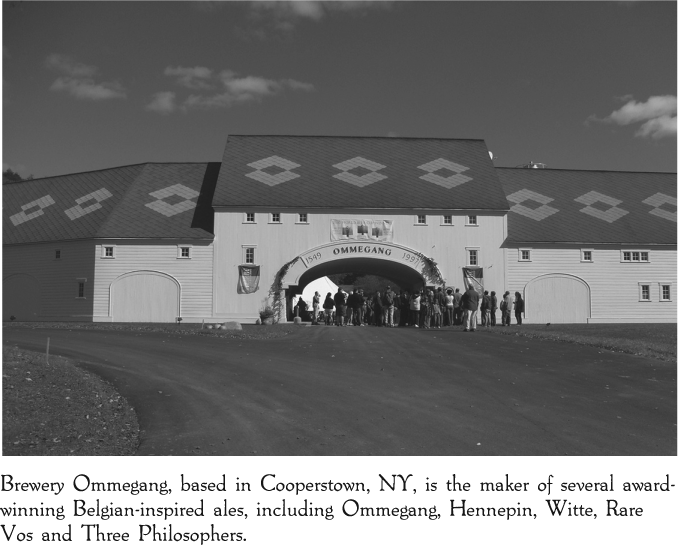
Again, do not think of this as the definitive listing of beers that age well. It’s only a beginning and represents those beers I’ve had that were from previous years.
What is there about high levels of alcohol that seem to prevent some beers from developing bad traits? One thing we know for sure is that the presence of ethyl alcohol is effective in retarding the development of those microorganisms that cause a beer to spoil. The more alcohol present, the longer it takes for a beer to turn bad. As a beer ages, alcohol reacts with other compounds that are present to yield fruity, wine-like aromas and flavors. Many vintage beers tend to have components of banana, apple, grape, and orange, for example—qualities that aren’t objectionable. This change just doesn’t occur in those beers with little alcohol.
Bottle-conditioned, unfiltered beers with a low amount of alcohol will not age as well as those with higher levels. Those are the beers with active yeast added at bottling time, the same yeast used during fermentation. As for why this type of beer can be more effectively stored than those that aren’t bottle-conditioned, remember what the yeast still in the bottle does. Any remaining sugars are converted into alcohol and bubbles of carbon dioxide. Knowing that oxygen is an element that destroys a beer’s essence and there is a tiny bit of oxygen in the bottle, the yeast more or less binds that oxygen, reducing instances of bad flavor.
Of course, the yeast does not stay alive forever. After about a year, the dead and decaying cells (sounds appetizing, huh?) can affect the flavor of the beer. This change could be positive or negative, depending on the strain of the organism and the style of beer. For this reason, some brewers filter their beer then add fresh yeast as a way to control future flavor.
You need to be aware of the fact that yeast cells are vulnerable to temperature variations. Warmth will speed the refermentation process and hasten the deterioration of those cells. Refrigeration will slow things down and add time to your aging beer, but will not stop what naturally is going to occur.
By now some of you may be wondering about the bitter, hoppy beers, such as the India pale ales (IPA). What a curious history to this style of beer, dating back to eighteenth-century England. Briefly, because back then the beer didn’t survive the journey to the British troops stationed in warm climates without spoiling, extra hops and grain were added to existing pale ale, then shipped. The result was a highly bittered drink, very high in alcohol. The preservative effects of both the alcohol and hops ensured against contamination.
I’ve tried aging a few well-hopped beers, including Dogfish Head’s 90 Minute IPA and Sierra Nevada Pale Ale, arguably two of the best of its type. What I experienced with that beer has been replicated with other India and American pale ales.
The smell of hops is influenced by the variety of hops used and when these are added. If included near the end of the boil, a fragrant floral or citrusy smell will emerge. What happens with these beers is a loss of that bouquet. Furthermore, bitterness tends to dwindle as the alpha acids responsible for flavor break down. Consequently, the beer you laid down will bear little resemblance, at least in flavor, to the original. The 90 Minute IPA comes in at 9 percent ABV, but the company brews a limited-edition bigger brother called 120 Minute IPA, weighing in at (gulp) 20 percent ABV. I’ve heard of individuals laying this down with a good deal of success.
You especially observant readers will note that there’s been no mention of lagers, possibly a surprising omission given the fact that a lagered beer has already been aged for some time. Evidence suggests that the manner in which lagers are brewed in conjunction with a warm storage temperature leads to loss of flavor. I did age one lager, Paulaner Oktoberfest, for a year in a refrigerated environment and found degradation to be noticeable, but not to the point of being undrinkable. I then placed some of the bottles in my normal cellar conditions and witnessed a marked decline in quality within a matter of a few weeks. In this example, the cold definitely slowed down the harm to the beverage.
If you’re selecting low-alcohol beers or possibly lagers for storage, consider opening up your bottles intermittently to check on flavor. If you see signs that the beer is on the verge of becoming unpleasant, then you can take the necessary corrections or just discard the product. Bear in mind that a beer that is turning will not do so overnight and some of those changes, although undesired, may still make for a reasonably acceptable beer.
At the beginning of this section, I mentioned that I have several bottles of Christmas Ale by Anchor Brewing going back to 1982. I wish I could take the credit for being so resourceful in obtaining and aging them, but I can’t. Sports buffs will recognize the name Andy Musser, longtime voice of the Philadelphia Phillies baseball team. In his travels, Andy, a beer aficionado, was able to visit some of the best breweries and pubs throughout the country. He met Fritz Maytag, owner of San Francisco’s Anchor Brewing, and they immediately became friends based on Andy’s love of his beverages and Fritz’s enjoyment of the sport. Eventually, Andy began working for Anchor and, to this day, hosts speaking engagements and beer festivals where Maytag’s beers are present. While I was chatting with Musser one day, the discussion turned to the aging of beers. He asked me if I’d be interested in owning the equivalent of about three cases of Christmas Ale, going back to 1982. He assured me they had been properly stored, and I graciously accepted. A couple of weeks later, we met again and the swap was made. Because Anchor alters the recipe for Christmas Ale each year and keeps those changes a secret, it is difficult to compare the cellared editions to the originals. All I could hope for was a delicate aging, which it fortunately has done.
As peculiar as the concept of aging beers for decades may seem, my reserve hardly qualifies for any sort of record. In late 2006, 250 bottles of Ratcliffe Ale from Worthington’s White Shield Brewery of England were found within the vaults of the company. A value hasn’t been placed on them. The bottles were sealed with corks and stored in the dark at a cool temperature. One bottle was opened and tasted by a few connoisseurs, one of whom was quoted as saying, “It’s amazing that beers this antique can still taste so delicious. Established wisdom would say beers this old should taste of vinegar, damp rags and Marmite (a yeast extract). Instead, it showed flavors of raisins and sultanas (a variety of grape), baked apple and honey. The 1869 Ratcliffe Ale is bright and luminous like an ancient Amontillado sherry and has a meaty character like smoked partridge with hints of molasses. It’s amazing it tastes this good after 137 years.”
New Jersey resident Greg Drusdow first was exposed to the concept of aging beers several decades ago and now has built an impressive inventory. He said, “I first started understanding that there were some beers that could actually use some time in the bottle when traveling through Europe on work from the mid-1970s into the late 1980s. I got introduced to storing beer at the long-gone Sun Pub on Lambs Conduit Street in London. They had a selection of beers from all over England, which I enjoyed immensely, but they introduced me to Courage Imperial Russian Stout that was vintage-dated on each bottle. I still have three 170-ml. Bottles remaining from the 1980 and 1981 vintages. The label states that it was originally brewed for Catherine II of Russia and that a two- or three-year-old vintage was drinkable and could be aged for even longer. I also kept Thomas Hardy’s Ale, having a vintage date of 1981. The back label indicates that it will last for at least twenty-five years since it is bottled with its natural yeast. They suggest a storage temperature of fifty-five degrees Fahrenheit and proudly boast that it is the strongest beer in Britain.”
What are the thoughts of the experts from the beer world on aging beer? Via the technological miracles of email and the old-fashioned telephone, I posed some questions to Garrett Oliver, brewmaster of Brooklyn and author of The Brewmaster’s Table; Stan Hieronymous, editor of Realbeer.com and author of numerous books on beer; Don Russell, award-winning reporter, radio show host, and writer for the Philadelphia Daily News; Peter LaFrance, author of Beer Basics: A Quick and Easy Guide; and Rex Halfpenny, certified beer judge and publisher of the Michigan Beer Guide. I wanted a cross section of people from a range of perspectives in order to get a balanced approach to the concept of storing beers. Here is what they had to offer:
The notion of cellaring beers remains unfamiliar to many. What are some benefits to this concept?
Garrett Oliver: Especially in bottle-conditioned beers, flavors will evolve and marry. Hops will drop back and allow malt and fruit flavors to come forward. Belgian beers in particular may become more spicy and complex. Oxidation can produce sherryish notes that can be pleasant in some beers.
Don Russell: Cellaring beer is like a great surprise. I save so much beer, I never really know what I’ve got in my cellar. When friends come over, I usually just reach for whatever I have in my fridge. But when beer lovers stop in, it’s fun to blow them away with, say, a five-year-old Samiclaus or two or three vintages of Bigfoot [Sierra Nevada Bigfoot Barleywine].
Rex Halfpenny: Besides greed and lust to hoard and possess what few others do not, cellaring beer provides a ready stock of my favorite beverages in a variety of styles to suit any occasion and food pairing.
Obviously there is a degree of risk associated with cellaring beers. What are some of those pitfalls?
Garrett Oliver: Most beers, especially filtered ones, will not benefit from cellaring and are at their best when they leave the brewery. Filtered strong beers, such as barleywines, may age well. Pitfalls include unpleasant oxidation effects because no one wants a sherryish pale ale, loss of hop bitterness and aroma, and the development of haze and overall staling.
Peter LaFrance: Pitfalls are the usual: light and temperature swings.
Rex Halfpenny: Some beers do better with further conditioning and some do not. So stock rotation is important. Sometimes one forgets to discover an oxidized beer or worse, a beer that was once great, rendered to uncharacteristic acidity or tartness due to biological instability. Then there is the problem of space.
Have you ever stored beers? If so, were you satisfied with the results?
Garrett Oliver: I have a small collection of barleywines from the mid-1980s. they are absolutely magnificent, which they would not have been when they were released. They are finer and more complex than the best tawny ports I’ve tasted and I’ve tasted some great ones.
Stan Hieronymous: I’ve been pleased more times than not. It’s most fun when you can taste, for instance, a 1995 Sierra Nevada Bigfoot and a 1998 and a 2001. maybe they made it a little bigger one year, a little hoppier another, but you’ve also got things that have been going on for different amounts of time.
Don Russell: I’m not always satisfied with the results, but that’s my own damn fault. It usually has to do with huge temperature changes, like the time I discovered a little-used beer fridge in the garage had conked out for a month in the middle of July. I lost at least two years’ worth of Rochefort on that one.
Rex Halfpenny: I always have far more beers in the cellar than I will ever drink without the help of friends. I love to get beers that will cellar and by that I mean those big, dark, high-alcohol, high-hops, big bottles, rare vintages, et cetera. The results are that I have lots of beers that will cellar well.
Name one beer you have cellared, how long it aged, and the effect on flavor.
Garrett Oliver: I have been asked to preside at vertical tastings of both Brooklyn Black Chocolate Stout at 8.7 percent ABV and Brooklyn Monster Ale at 10.7 percent. Black Chocolate Stout became smoother and more integrated over time. It also became drier and fruitier. The years tasted were 1994, 1995, 1996, 1997, 1998, and 1999. A New York bar, The Blind Tiger, once put five years of Monster Ale on draft; the Five-Headed Monster, they called it. This beer also became smoother over time. Beers that been somewhat hot and alcoholic at release had calmed and mellowed. Flavors were better integrated and the beers were fruitier and more complex.
Stan Hieronymous: Not the oldest or biggest, but the 1995 King & Barnes Christmas Ale at five years was still a masterpiece. But maybe it wasn’t worth the bother because it was also great at a year, although it did take on more caramel notes and a light, delicate spiciness, considering it is brewed with no spices.
Don Russell: Like most, I go for heavy beers … barleywines, some of the Trappists, an occasional stout. Two of my favorites were Sam Adams Triple Bock, which completely mellowed out after about three years, like a port; and De Dolle’s Stille Nacht, which I thought turned kind of peppery over the course of four or five years. That reminded me of good sipping whiskey.
Peter LaFrance: I have kept three bottles well wrapped in the coolest northern-facing closet. One was a homebrewed Russian Imperial Stout that was kept for ten years. The carbonation was evident, the flavors were smooth with an almost cognac or port flavor, heavy with tart cherries, anise, and raspberry. It was very full-bodied, but the relatively high alcohol content kept it from tasting and feeling like molasses in the mouth. I also have a bottle of Thomas Hardy’s Ale 1986 and Chimay Grand Reserve bottles in May, 1993. I’m waiting for the right moment to open them.
Rex Halfpenny: Alaskan Smoked Porter ages nicely, but loses smoke intensity. I have made an excellent, award-winning Export Scotch Ale that began to show instability by revealing sourness. Sierra Nevada Bigfoot is big, dark, and alcoholic, but oxidizes after a few years, though I still have and drink vintages as far back as the 1980s. J. W. Lees Harvest Ale is a great bottle-conditioned English barleywine, and some vintages age wonderfully by becoming slightly drier and more complex with a more rounded and fuller profile. This beer on wood [barrel-aged] is even better.
In conclusion, what advice would you have for the novice who is thinking about laying down some beers?
Garrett Oliver: Do not bother to age filtered beers with strengths of less than 7.5 percent by volume. They are unlikely to improve in any way. Bottle-conditioned beers with an alcohol by volume as low as 5 percent can age well, though not for more than a year. Strength tends to confer aging potential. Do not attempt to age beer at temperatures below forty-five degrees in the refrigerator as it will be a waste of time. Also, do not store aging beers at temperatures above seventy-five degrees for any period of time. A cellar, if you’re lucky enough to have one, is best. An old refrigerator can be used as an aging cellar. Many old fridges are thrown out because they no longer get cold enough. These are perfect for storing beer in. Perfect temperatures will be in the fifty-to-sixty-degree range.
Stan Hieronymous: Label the bottles when you bought the beer and when you lay it down. Small price stickers from an office supply store work great. You might end up with a 1992 Thomas Hardy you’ve owned since then and a four-pack you found in a cooler last year. Monitor your stash. Obviously you have to have more than a single bottle on hand to do this, but taste the beer periodically. If a beer starts to drift on you, drink it while you can still enjoy it. Take good notes every time you taste a beer, when you lay it down, when you try the first bottle, et cetera. Pay particular attention to how the hop character changes, what yeast and malt flavors come to the fore, and if any spices are present. Consider a beer fridge if you don’t have a basement. Get a temperature controller and keep the beer at fifty-eight degrees or so. Try to keep the beer as far from the compressor as possible. Too much shaking will confuse the heck out of any yeast in the bottle.
Don Russell: Date your beers with a marker. I forget to do this all the time, but there’s no way you can remember what you have over time. Also, share your bottles with someone. It’s fun and it’s a great way to compare notes on how the tasting went.
Rex Halfpenny: There are rules. Dark and cool is primary. Second, dark color and high alcohol, followed by firm hops, will help the beer keep. Ales do better than lagers. Only unpasteurized and unfiltered beer will keep and improve. Some high-alcohol dark beers like EKU 28, Samiclaus, Eisbock, and the like will keep cool and dark, but not improve. Belgian lambics and gueuze will keep a few years and gain complexity.
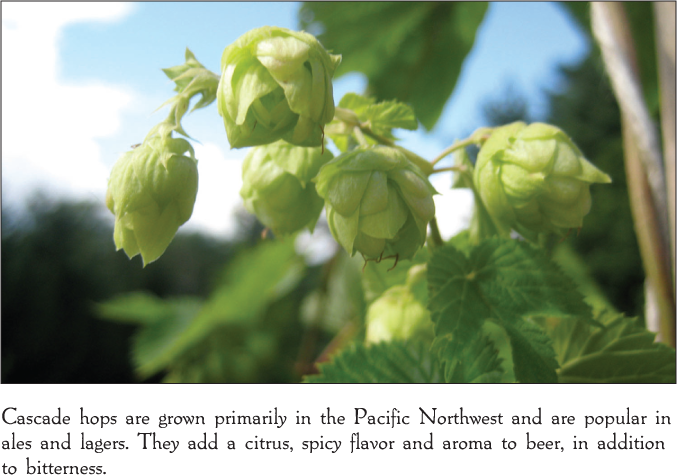
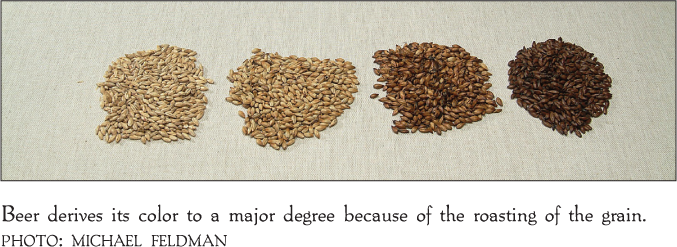
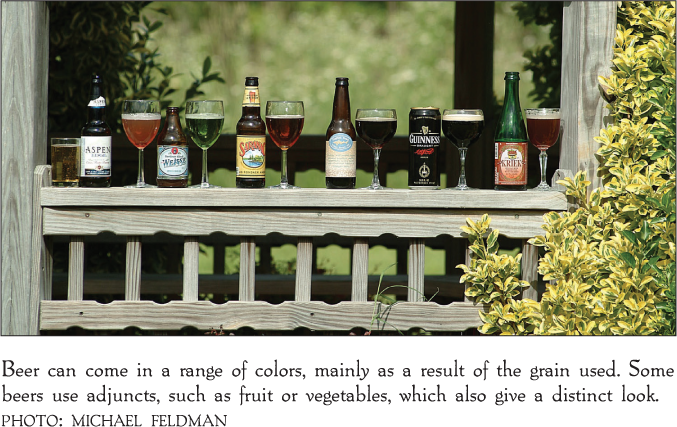

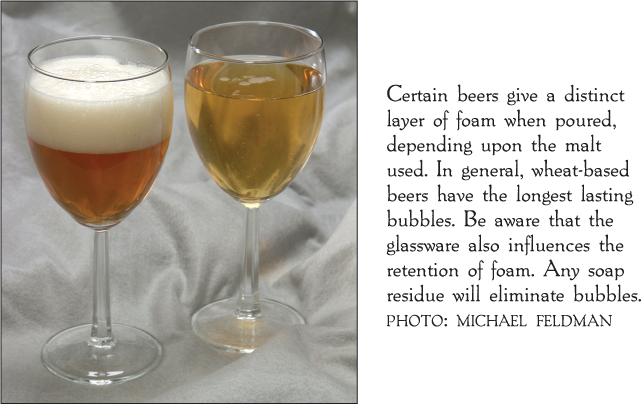
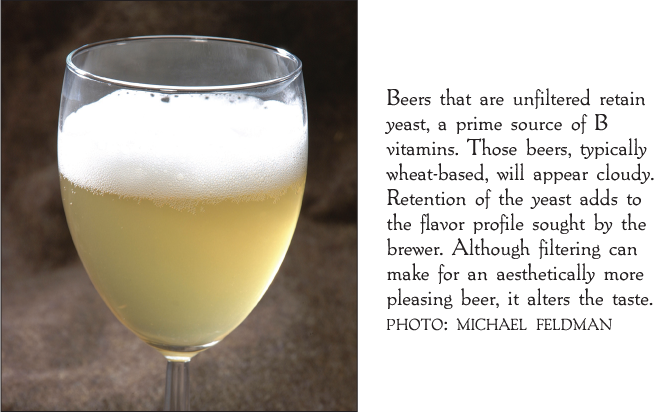
The “Dream Team” Case of Beer
(See chapter 6)
